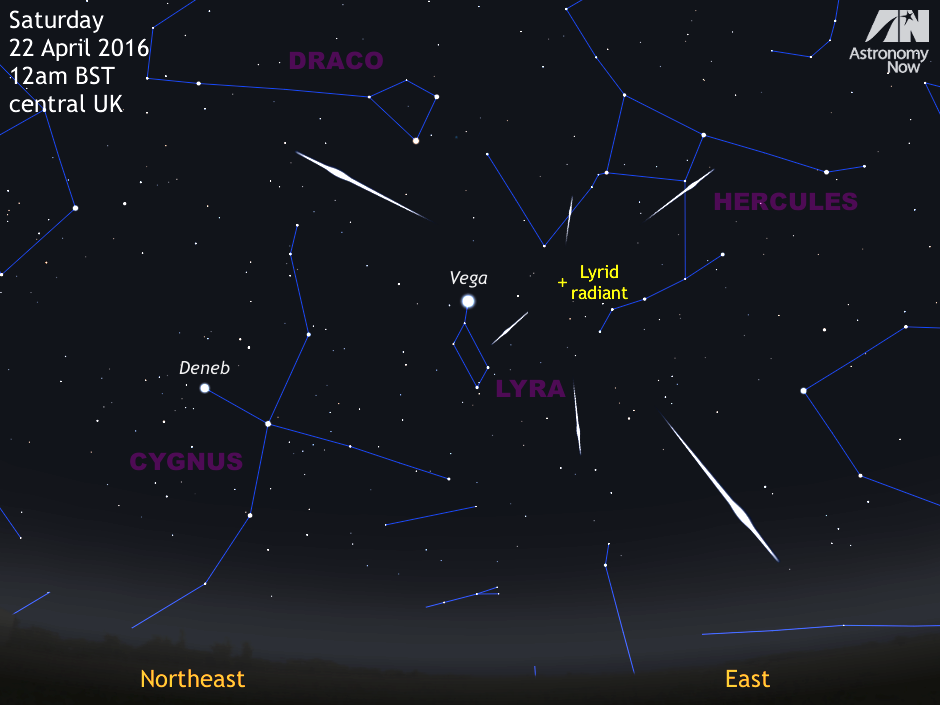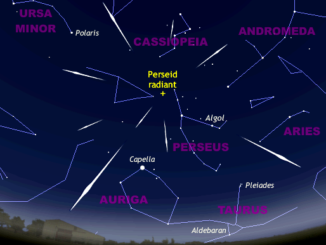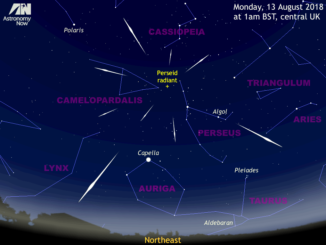
Cometary particles strewn along the orbit of long-period Comet C/1861 G1 (Thatcher) are the genesis of the Lyrid meteors. Those meteoroids entering the Earth’s atmosphere do so at velocities up to 30 miles (48 kilometres) per second, hence it’s not surprising that the streak of light marking their heated demise can be so impressive.
Active from 16–25 April, the peak of the shower is expected around 12h UT on 22 April, which would favour North American observers. However, the time of the peak is variable from year to year, so the maximum could lie between 4h and 15h UT.
Observers looking in the eastern sky after midnight can expect around a dozen meteors per hour under favourable conditions, especially since this year’s maximum occurs four days before new Moon. (The waning crescent Moon rises around 4:30am BST on Saturday 22 April for the centre of the UK.)
As is typical of most meteor showers, fainter Lyrids are the most plentiful, so your chances of observing some are greatly improved if you can find a safe, rural location well away from artificial lights.



